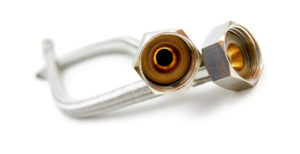 The radiator hose is often a silent warrior, diligently performing its duties to keep your car and engine running smoothly without overheating. Ideally, you should inspect your radiator hose every time you change your oil, but many of us forget this step until a problem comes along.
The radiator hose is often a silent warrior, diligently performing its duties to keep your car and engine running smoothly without overheating. Ideally, you should inspect your radiator hose every time you change your oil, but many of us forget this step until a problem comes along.
When it’s time to change or replace the radiator hose, years of grime or rust can make it difficult to remove, especially if yours is located deep inside the engine compartment and hard to reach in the first place. So how do you remove stuck radiator hoses when the time comes?
Here are a few tips and tricks for getting the radiator hose off without damaging the hose nipple or any of the surrounding engine parts.
- Use a hose clamping tool
Grip the connecting area with heavy duty hose clamps and gently but firmly twist back and forth. If you can keep turning the clamp counterclockwise with a screwdriver, eventually it will expand and open up completely. Just be careful not to apply too much pressure, or you may end up denting or damaging the reinforcement inside the hose.
- Use a hose pick removal tool
If you can get the clamp off but the hose itself is still stuck, use a pick removal tool with the curved end inserted into the end of the hose. Work it around the edges to loosen the hose as you pry it up and out from the nipple. Go slowly if you want to be able to reuse the same hose.
- Cut it off
If you’re installing a brand new radiator hose and don’t care about the condition of the old one, you can simply cut it right off with a box cutter. Slice carefully about two inches from the nipple and it should twist off much more easily. This is a handy option when the radiator hose is still stuck in place even after the hose clamp is removed.
To prevent stuck-on hoses in the future, opt for stainless steel clamps. These heavy duty hose clamps will be much more resistant to rust and corrosion over the years, especially if you live in a wet or seasonal climate. More importantly, don’t forget to inspect your radiator hose with every oil change. A close eye will help prevent you from getting “stuck” again down the road.

